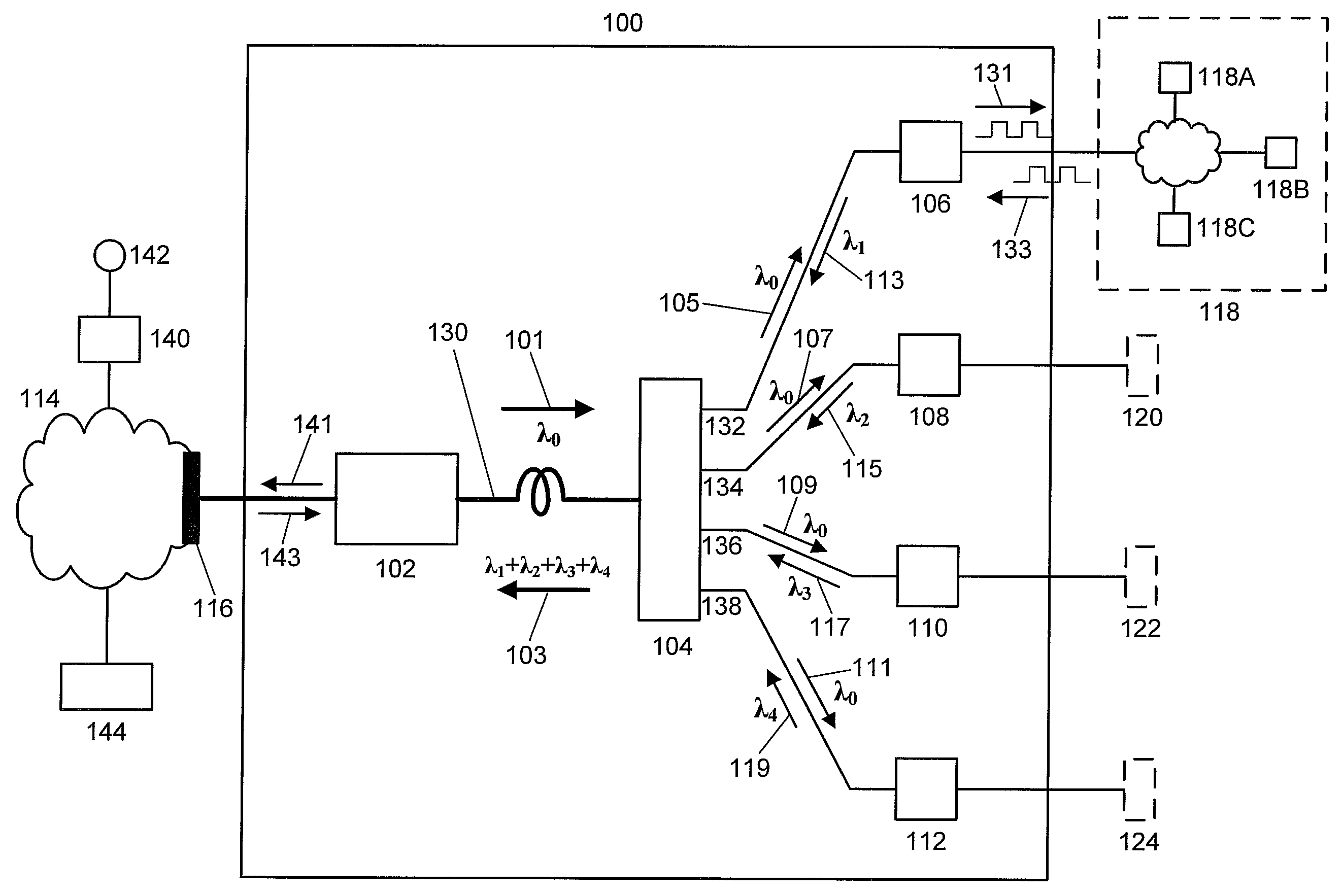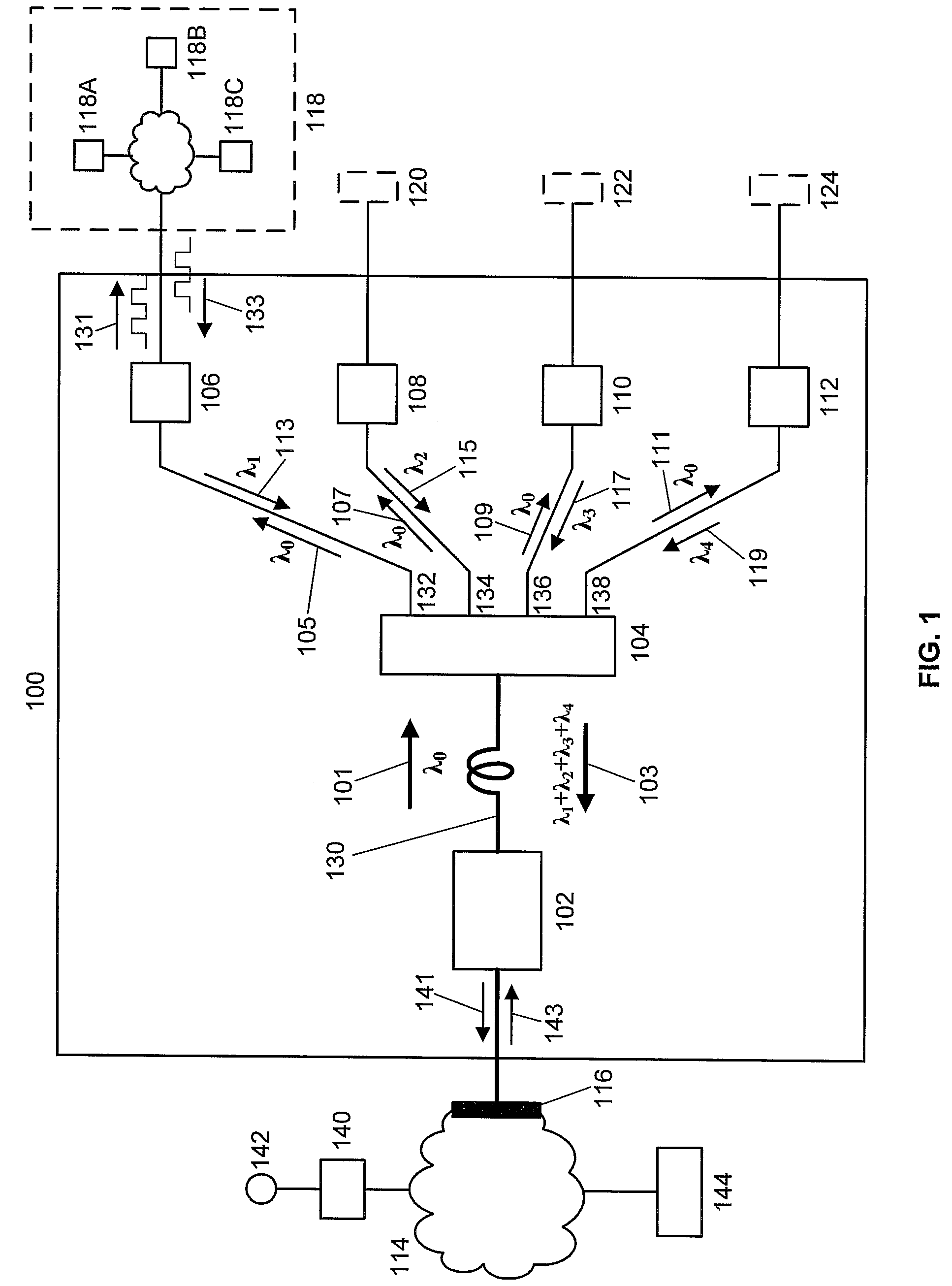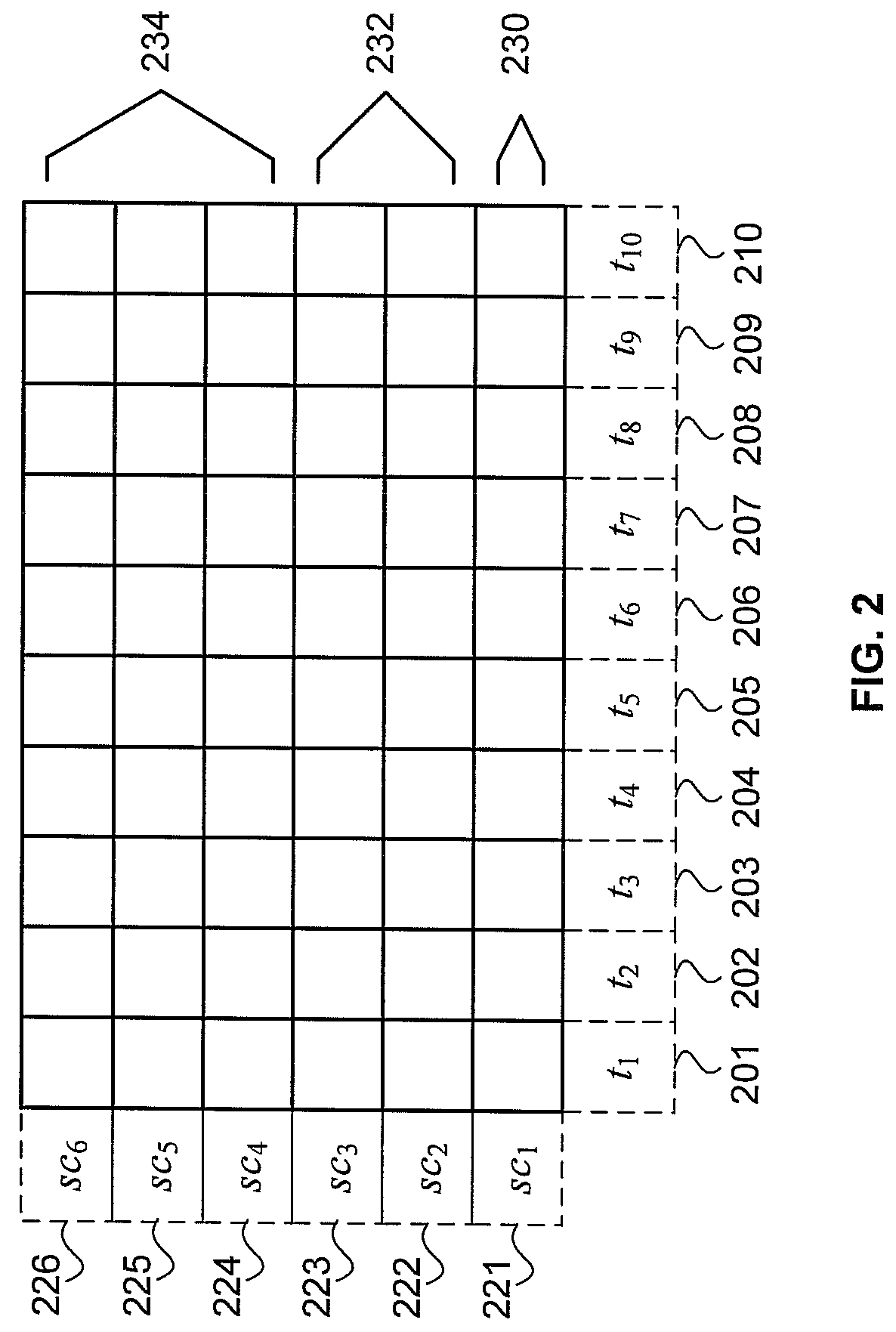Orthogonal Frequency Division Multiple Access Based Virtual Passive Optical Network (VPON)
a passive optical network and orthogonal frequency division technology, applied in the field of fiber optic transmission (transport) systems, can solve the problems of difficult and expensive supply of reliable power to outside plants, uncontrolled environment, equipment installation, etc., and achieve the effect of efficient and dynamic allocation of bandwidth
- Summary
- Abstract
- Description
- Claims
- Application Information
AI Technical Summary
Benefits of technology
Problems solved by technology
Method used
Image
Examples
Embodiment Construction
[0016]Multiple network architectures and multiple network protocols are evolving for passive optical networks (PONs). The operating environment of local access and premises networks are less defined than that of core networks. Low costs are also a more significant factor for PONs than for core networks, since the cost of a PON is amortized over fewer customers than that of a core network. FIG. 1 shows a high-level schematic of a PON, referred to as a virtual passive optical network (VPON) 100. It is referred to as a virtual passive optical network because it may flexibly and dynamically adapt to and simultaneously support multiple passive optical network protocols via software. VPON 100 may support a diverse range of users and applications without major changes in hardware.
[0017]In the embodiment shown in FIG. 1, VPON 100 includes optical line terminal OLT 102, passive remote node RN 104, and optical network units ONU1106-ONU4112. OLT 102 is typically located in a central office; RN...
PUM
 Login to View More
Login to View More Abstract
Description
Claims
Application Information
 Login to View More
Login to View More - R&D
- Intellectual Property
- Life Sciences
- Materials
- Tech Scout
- Unparalleled Data Quality
- Higher Quality Content
- 60% Fewer Hallucinations
Browse by: Latest US Patents, China's latest patents, Technical Efficacy Thesaurus, Application Domain, Technology Topic, Popular Technical Reports.
© 2025 PatSnap. All rights reserved.Legal|Privacy policy|Modern Slavery Act Transparency Statement|Sitemap|About US| Contact US: help@patsnap.com



